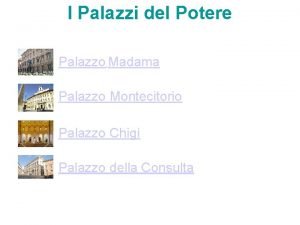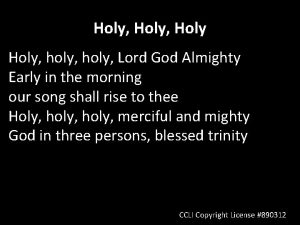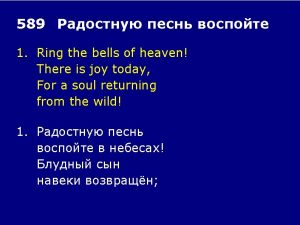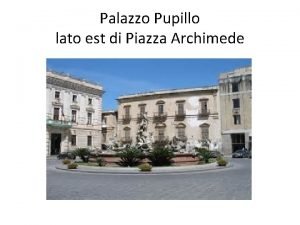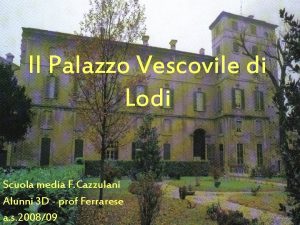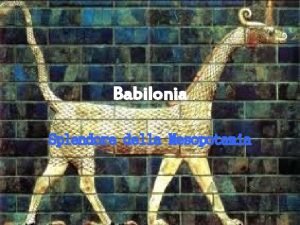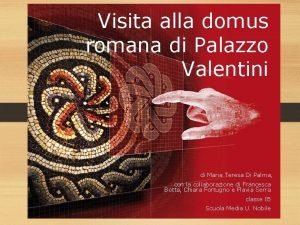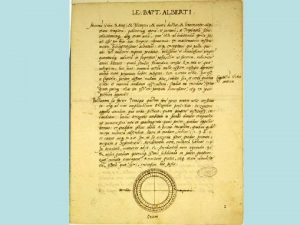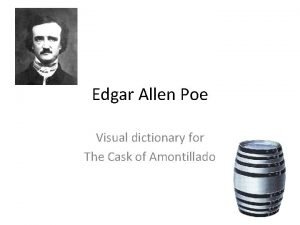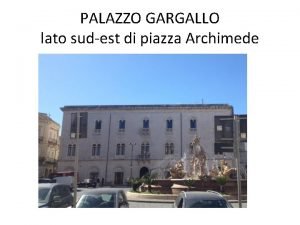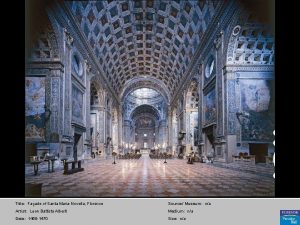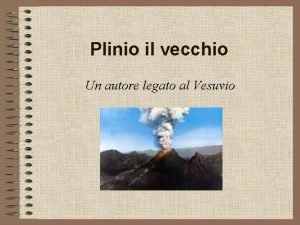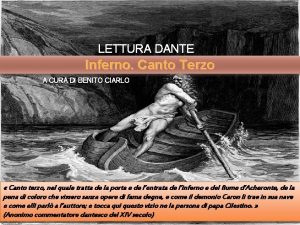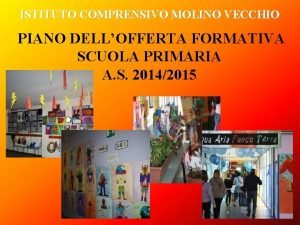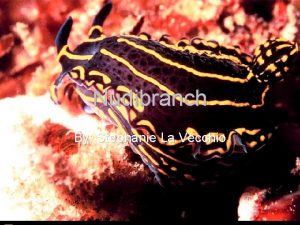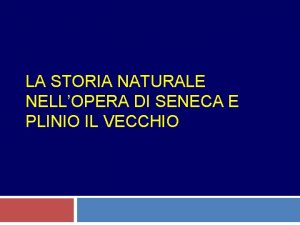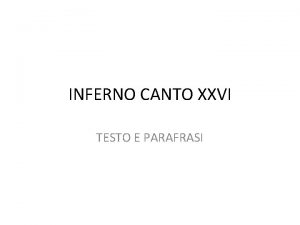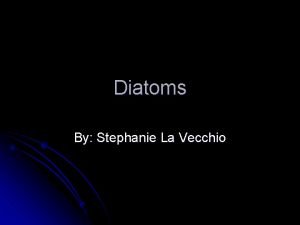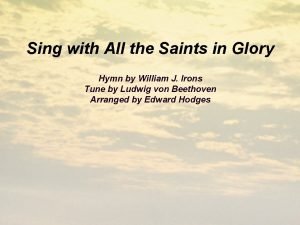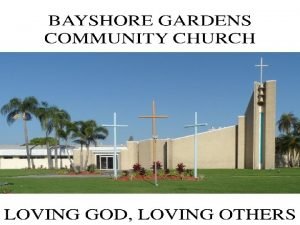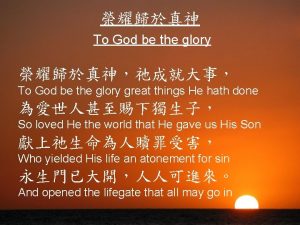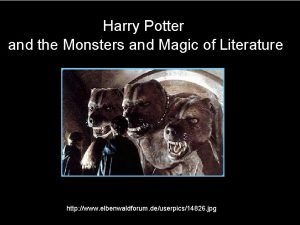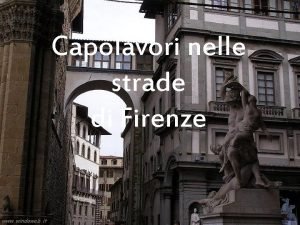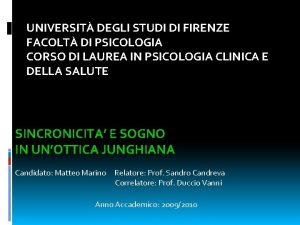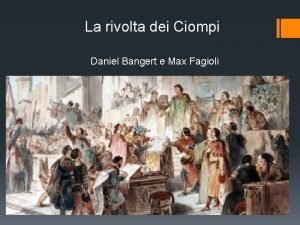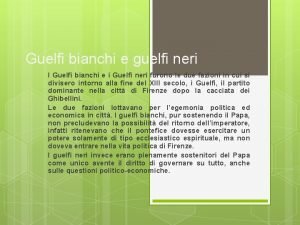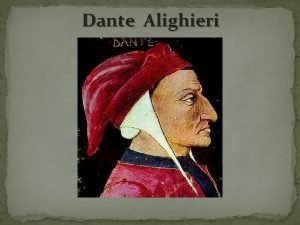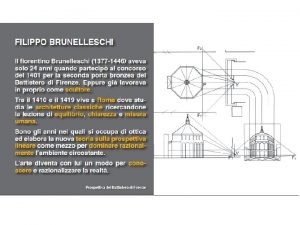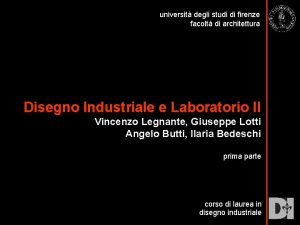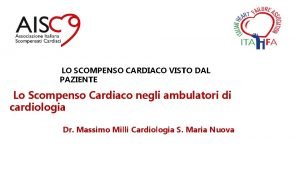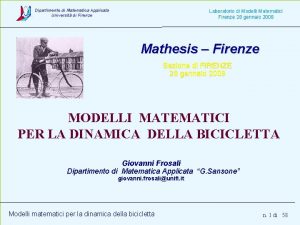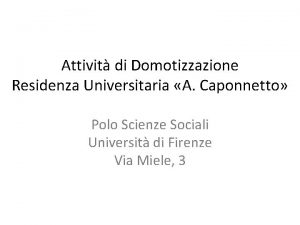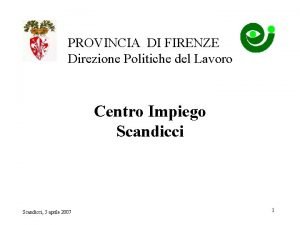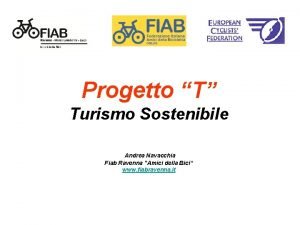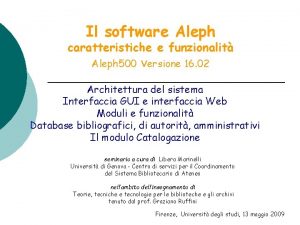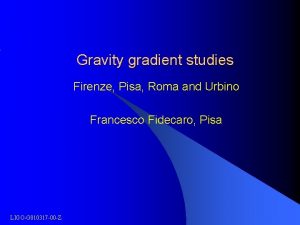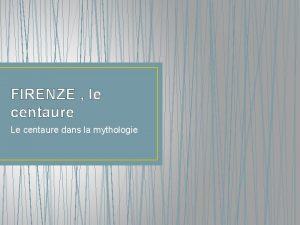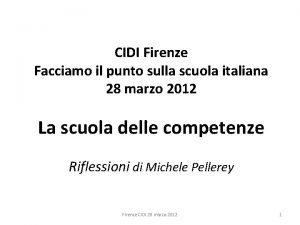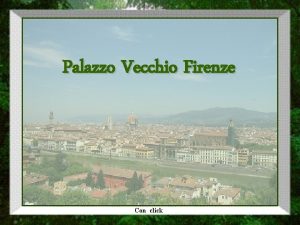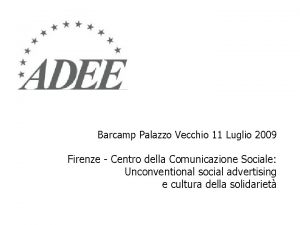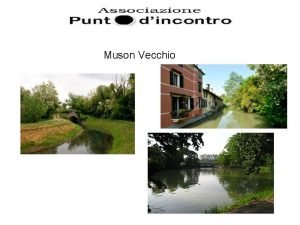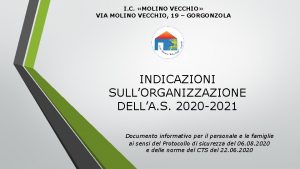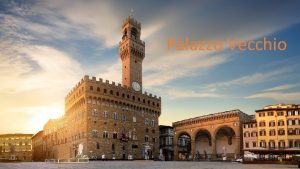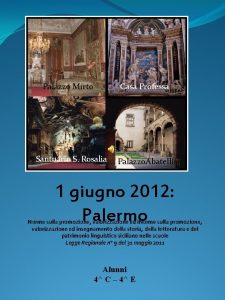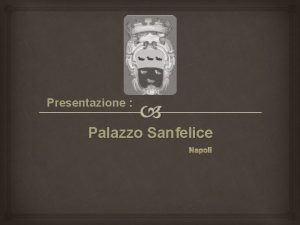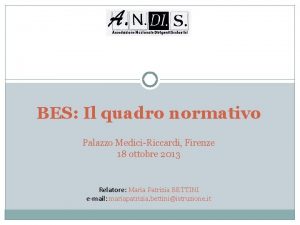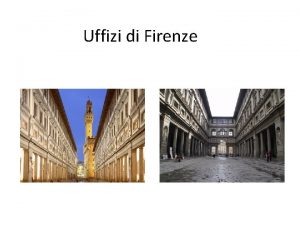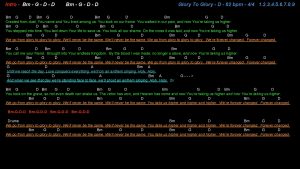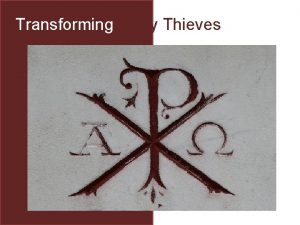Firenze in all its glory Palazzo Vecchio e




















































- Slides: 52


“Firenze”, in all its glory!

Palazzo Vecchio, e Duomo – Cattedrale di Santa Maria del Fiore Florence, Italian town enriched by works of art surrounding its two major architectural highlights: Palazzo Vecchio and Santa Maria dei Fiori, the Duomo

Palazzo Vecchio – and parcial view of the city Its construction begun in 1299 and was completed in 1314. From then onwards was the seat of the Signoria, or the City Council, headed by the Priors – including Dante Alighieri, in 1300.

Palazzo Vecchio - entrance Opened as Palazzo della Signoria in 1565, was renamed the Palazzo Vecchio when the Court of Grand Duke Cosimo I moved to the "new" Palazzo Pitti, and government administration and the judiciary to the adjacent Galleria degli Uffizi. .

Palazzo Vecchio – Primo Cortile The first courtyard, which is accessed through the main gate of the Piazza della Signoria, was designed in 1453. The columns are richly decorated with grooves alternate with other parts on golden stucco work. .

Palazzo Vecchio - Salone dei Cinquecento Girolamo Savonarola ordered its construction as the seat of the Consiglio dei Cinquecento, or Major Council, comprised of 500 citizens chosen so as to prevent the power back to being controlled by only one person, as before the expulsion of Piero de Medici.

Fontana del Nettuno In front of the Palace, there are sculptures like the Marzocco, Donatello’s Judith and Oloferne; a copy of Michelangelo's David; Baccio Bandinelli’s Hercules and Caco; and, at the center of a fountain of the same name, that of Neptune by Bartolomeo Ammannati.

Palazzo Vecchio e Loggia dei Lanzi The Loggia, on relaxed style contrasts with the severe architecture of the Palazzo Vecchio. The Loggia is actually an open-air gallery of ancient and Renaissance works.

Loggia dei Lanzi Built in the fourteenth century as a place for Assemblies and ceremonies, afterwards as host of the mercenaries of the Grand Duke Cosimo I de 'Medici, called lanzi (corruption of "Lanzichenecchi"), today exposes famous sculptures, among other Cellini’s Perseus, the Rape of Polyxena from Pio Fedi, and the Rape of the Sabine Women.

Loggia - The rape of the Sabine women - detail On the far right you can see the group by the mannerist Flemish artist Jean de Boulogne, better known by his Italianized name Giambologna. This impressive work was made from one imperfect block of white marble, the largest block ever transported to Florence. The model is now in the Galleria dell' Academia. Giambologna wanted to create a composition with a serpentine form, an upward snakelike spiral movement to be examined from all sides. This is the first group representing more than a single figure in European sculptural history to be conceived without a dominant viewpoint. It can be equally admired from all sides. The marble pedestal, also by Giambologna, shows bronze bas-reliefs with the same theme. This marble and bronze group is in the Loggia since 1583.

Piazzale Michelangelo Across the Arno, besides the Palazzo Pitti and its beautiful gardens, sits the Michelangelo square, from where you have the best view of the town.

View from Piazzale Michelangelo where one can admire, among other highlights of the city, the Ponte Vecchio, the tower of Palazzo Vecchio and the Duomo complex.

The house of Michelangelo Casa Buonarroti - The building was property of the sculptor (never occupied by him), which he left to his nephew, Leonardo Buonarroti. The house was converted into a museum dedicated to the artist by his great nephew, Michelangelo Buonarroti, the Young.

Galleria della Accademia - Tribuna di David, di Michelangelo Since its foundation (1784), the Gallery has had major artworks as the plaster model of Giambologna's sculpture The Rape of Sabine’s. In 1872, Michelangelo's David was moved from its original position at Piazza della Signoria into a special space in the Gallery.

Galleria della Accademia Galeria dei Prigionieri, so named for hosting the famous four Unfinished Captives by Michelangelo, which were originally destined for the tomb of Pope Julius II.

Cappelle Medicee – Sagrestia Nuova The Medici Chapel, which is part of the Church of San Lorenzo, boasts in its "Sagrestia Nuova" – a funeral chapel – works of Michelangelo as architect and sculptor. In it are the graves of the most famous of Medici’s: Giuliano at left and his father Lorenzo il Magnifico at right, adorned with sculptures by Michelangelo.

Cappelle Medicee - Sagrestia Nuova Highlight of the tomb of Lorenzo, decorated with sculptures of Michelangelo that received the names of "il Crepuscolo" and "l'Aurora".

Mercato Nuovo Construction of mid-sixteenth century, bears a structure with beautiful Corinthian columns, and serves as shelter to the market where dominates trade in straw and leather. However, almost everything can be found there. . .

Basilica di Santa Croce Gothic church of Florence which most important aspect is to have been chosen to hold the remains of some of its sons that became part of the history of world civilization, among other, Michelangelo and Galileo Galilei.

Santa Croce – Cenotafio di Dante Alighieri Dante, author of The Divine Comedy, also bears here his honorary tomb since he was exiled from Florence. Dante and Beatrice starred the forbidden love of Florence, like Romeo and Juliet in Verona. On his greatest work, originally Comedy, Lino Pertile – an Italian linguist, Professor at Harvard University with specialty in Dante scholarship – told us: “Dear Flavio, The word "Divine" appeared for the first time in the poem's title in "La Divina Comedia di Dante”, edited by Lodovico Dolce and published by Gabriel Giolito of Ferrari in Venice in 1555”.

La Tomba di Dante a Ravenna His real tomb is in Ravenna. As an act of reparation for having exiled Dante from Florence, this city offered a silver lamp that, in a solemn ceremony, was lit by the Mayor of Florence. It is also the Fiorentino’s government who gives the oil that keeps a perpetual flame burning in the lamp on the Mausoleum of Dante.

Leonardo di ser Piero da Vinci, was born in Vinci, that belonged to Florence, on 15/04/1452. He was a polymath, one of the leading figures of the High Renaissance in Florence, best known as a scientist, mathematician, engineer, inventor, painter, anatomist, sculptor, architect, botanist, poet and musician. He is also known as the forerunner of aviation and ballistics. Leonardo has been described as someone whose insatiable curiosity was matched only by his powers of invention. He is considered one of the greatest painters of all time, and perhaps the person with the most diverse talents to have lived. Leonardo da Vinci According to art historian Helen Gardner, the depth and breadth of his interests were unprecedented and his mind and personality seem superhuman to us; the man himself was mysterious and distant. He spent most of his adult life in Florence, Italy, also lived in Milan and Rome. His last three years of life were spent in France, accompanied by his friend apprentice, Count Francesco Melzi, where he died in the city of Cloux, near Amboise, on 02/05/1519. "The benign nature has provided so that anywhere you find something to learn. " - Leonardo da Vinci

Piazza della Repubblica City’s center since the Roman Empire, was rebuilt at the time of Florence as capital of the Republic – United Italy, 1865 to 71. The Colonna Dell'Abbondanza was built here to remember the past.

Mercato di San Lorenzo Of nurture in Florence, one can say that in it is present the gastronomy Italian art in all its sectors.

Via de’ Tornabuoni and surroudings where are some of the great names of international influence in Fashion.

Cattedrale di Santa Maria del Fiore - Duomo The cathedral is impressive by its size (it is the fourth largest church in Europe), by the use of colors and, of course, for its architectural design.

Duomo e il Campanile di Giotto’s Campanile is a free-standing campanile that is part of the complex of buildings that composes the Duomo.

La Cattedrale – interno Duomo or cathedral, for there sits the Chair of the Bishop, that is, the place where the bishop celebrates and preaches the word of the Lord. Its construction was initiated on 09. 1296, the nave was completed in 1380, and the dome remained incomplete until 1418.

Dome – The only way is up This circular staircase is the only means of access to the summit, with 463 steps built with few openings to receive light and ventilation. These small windows allow visitors to marvel at various angles of the city.

Duomo – Cupola di Bruneleschi The cupola, which opened in 1463, is the masterpiece of Brunelleschi, a breakthrough in its support system’s construction.

Il Battistero Many tourists admire and walk between the Duomo and Baptistery.

Il Battistero – door detail The main attraction, however, is the magnificent door of the Baptistery, sculpted by Ghiberti – it was not by accident that Da Vinci himself called it "heaven's door".

Festa della Stagion Bona a Panzano in Chianti - Firenze It is a folkloric event celebrating the start of spring with a parade of traditional Renaissance’s costumes, plenty of tents with delicacies from all over Tuscany, music and other attractions.

Palazzo Medici Riccardi In the 300 years that was dominated by the Medici, a rich and bloody family of bankers, Florence funded architects, painters, sculptors and attracted the largest number of geniuses per square meter that the world has ever seen. Between the 14 and 16 Centuries, the city was the scene of revolution in poetry (Dante Alighieri), political science (Machiavelli), sculpture (Donatello, Cellini, Ghiberti, Giambologna), painting (Giotto, Michelangelo, Botticelli, Filippo Lippi) and architecture (Brunelleschi, Giorgio Vasari).

Palazzo Medici Riccardi The patriarch of the Medici’s fortune, Cosimo the Elder, ordered the construction of the palace, imposing but sober and austere (1444 -1452 or 1460), around a courtyard with Corinthian columns, and outdoors with rustic bossage effects contrasting with the delicacy of bifores on upper floors. His style has set the canons of the civil architecture of the Renaissance. . 1

Palazzo Medici Riccardi In the large park on the north side, were classical sculptures, some bought in Rome. In there was created the forerunner of the first Academy of Fine Arts in Europe, where young artists could copy and study the classical models and learn the artistic techniques. This academy formed young Florentine artists, which, years later, would revolutionize European art: Da Vinci, Raphael, Michelangelo and many other masters. The young artists were often hosted in the palace of Lorenzo, as occurred with Michelangelo, who lived his entire adolescence in the palace.

Palazzo Pitti The construction of this severe and imposing building was commissioned in 1458 by the Florentine banker Luca Pitti, to outshine the grandeur of the palace where the Medici lived. The work, extremely expensive, ruined the Pitti’s finances, that had to sell the building to the Medici family, its rival.

Palazzo Pitti In 1549 Cosimo I, Grand Duke of Tuscany, commissioned Vassari to execute the expansion of the building and the construction of an elevated walkway from the former royal residence, the Palazzo Vecchio, going through the Uffizi and the Ponte Vecchio until the Pitti Palace. This bridge was named Corridoio Vasariano (Vasarian Corridor).

Museo degli Uffizi Its origin is linked to the history of the Medici family. When Cosimo 1 st de Medici came to power in 1537, at age 18, showed extraordinary political and military skills, and soon became master of almost all of Tuscany. To highlight the center of the State, promoted an impressive urban development in Florence.

Museo degli Uffizi The Uffizi Gallery was opened in 1580, and is one of the world’s most famous and old painting and sculpture museums. The art collection of Primitive and Renaissance includes acclaimed masterpieces, such as from Giotto, Piero della Francesca, Fra Angelico, Botticelli, Da Vinci, Raphael, Michelangelo and Caravaggio.

Museo degli Uffizi The order of Cosimo I to Giorgio Vasari, the great painter and architect, has resulted in the building to host the offices of Tuscany, called Uffizi. Upstairs, the Grand Duke Francesco I created the Uffizi Gallery, enriched by various members of the Medici family, great collectors of works of art. The Corridor is the top floor.

Corridoio Vasariano - interior The Vasarian Corridor, as it became known, was an indicator of the prestige of the Medici family, that built his own way to reach the administrative center of the duchy without escort. Today, all its collection belongs to the Italian State

Corridoio Vasariano over Ponte Vecchio Its function was to facilitate the transit between the Palazzo Vecchio, the Uffizi and the Palazzo Pitti that, then, was used only to host guests of honor and eventually be Court.

Corridoio Vasariano si affacciano sul fiume Arno The corridor comes bordering the Arno and, constituting the top floor of the Ponte Vecchio, crosses the River.

Piazza della Signoria one of the most beautiful sceneries to enjoy being a tourist in Florence.

Ponte Vecchio The historic Ponte Vecchio, built in 1345, is home to dozens of jewelry stores, and is also point of attraction in the late afternoon, when people interested in seeing the sunset arrive.

Ponte Vecchio Jewelry at the Ponte Vecchio, through which one can see the other side of the river Arno.

The “charismatic” Ponte Vecchio Rebuilt in 1345, it is assumed that the original bridge was built in wood at the time of the Roman Empire. Not too old, however, is the belief that if lovers lock a padlock and throw the key to the river, will become linked forever. . .

With no bars or locks, I will be forever captive of the allurement of "Firenze" and for her my heart will always beat listening to music. . .

Photo imagery : from Internet, with credits to authors Music: “Looking for you” and “Nostalgia”, from Ennio Morricone - edited Performers – Yo-Yo Ma, Gilda Buttà Roma Sinfonietta Orchestra Director: Ennio Morricone Creation, research, compilation and formatting : Delza Dias Ferreira delzadfer@gmail. com Colaboration and English version: Flavio Musa de Freitas Guimarães Technical colaboration: Claudia Ricci Brazil – São Paulo – III - 2010 http: //culturesandart. blogspot. com

 Palazzo madama e montecitorio
Palazzo madama e montecitorio Glory glory glory to the lamb
Glory glory glory to the lamb Glory glory hallelujah he reigns
Glory glory hallelujah he reigns Sda hymnal 524
Sda hymnal 524 Glory glory oh god almighty
Glory glory oh god almighty Glory glory how the angels sing
Glory glory how the angels sing Zahrtmann sokrates og alkibiades
Zahrtmann sokrates og alkibiades Palazzo pupillo siracusa
Palazzo pupillo siracusa Palazzo vescovile lodi
Palazzo vescovile lodi Palazzo reale babilonese
Palazzo reale babilonese Palazzo chigo
Palazzo chigo Domus romana palazzo valentini
Domus romana palazzo valentini Majano
Majano Cask
Cask Bruno palazzo nazar
Bruno palazzo nazar Palazzo lanza bucceri
Palazzo lanza bucceri Palazzo rucellai
Palazzo rucellai Palazzo fieschi savignone
Palazzo fieschi savignone Giorgio del vecchio e miguel reale apresentam em comum:
Giorgio del vecchio e miguel reale apresentam em comum: La morte di plinio il vecchio zanichelli
La morte di plinio il vecchio zanichelli Lasse e nude significato
Lasse e nude significato Istituto comprensivo trento 7
Istituto comprensivo trento 7 Anibal film
Anibal film 14 endecasillabi
14 endecasillabi La vecchio
La vecchio Plinio il vecchio e seneca
Plinio il vecchio e seneca Parafrasi xxvi canto inferno
Parafrasi xxvi canto inferno Diatomae
Diatomae The yellow terror in all his glory
The yellow terror in all his glory Sing with all the saints in glory
Sing with all the saints in glory All glory
All glory To god be the glory now and forever
To god be the glory now and forever All glory to him
All glory to him The song of the redeemed
The song of the redeemed Draw three noncollinear points j k and l
Draw three noncollinear points j k and l Rab harry poter
Rab harry poter San giorgio donatello
San giorgio donatello Università degli studi di firenze psicologia
Università degli studi di firenze psicologia Convegno ecclesiale di firenze documento finale
Convegno ecclesiale di firenze documento finale Rivolta dei ciompi
Rivolta dei ciompi Guelfi neri e bianchi
Guelfi neri e bianchi Ne li occhi porta la mia donna amore sintesi
Ne li occhi porta la mia donna amore sintesi Il concorso per la porta nord del battistero di firenze
Il concorso per la porta nord del battistero di firenze Facoltà di architettura firenze
Facoltà di architettura firenze Dott milli cardiologo
Dott milli cardiologo Dipartimento di matematica firenze
Dipartimento di matematica firenze Residenza caponnetto
Residenza caponnetto Cpi scandicci
Cpi scandicci Firenze romana
Firenze romana Aleph 500
Aleph 500 Gravity sensitivity firenze
Gravity sensitivity firenze Firenze centaure
Firenze centaure Cidi firenze
Cidi firenze
